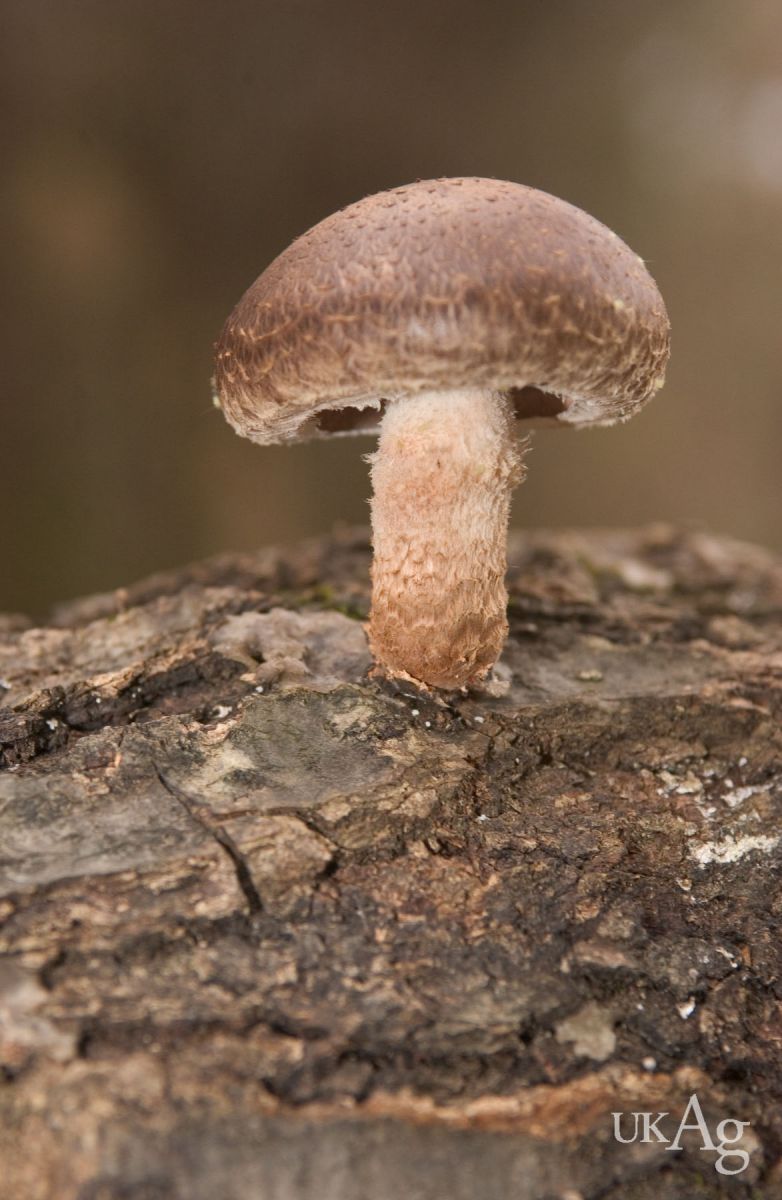Mushrooms
Shiitake (Lentinula edodes) and oyster (Pleurotus spp.) mushrooms are specialty mushrooms that are well-suited for small-scale production in Kentucky. Unlike Agaricus types (common button mushroom, portabellas, and criminis), which require large, highly mechanized facilities with environmental controls, shiitake and oyster mushrooms can be log-cultivated outdoors. While growers with access to a woodlot will have a clear advantage in terms of production site and log supply, these mushrooms can also be cultivated in other heavily shaded locations.
Marketing

The market for log-grown specialty mushrooms continues to develop in Kentucky. Growers have successfully marketed mushrooms at farmers markets and to specialty grocers and fine restaurants (particularly those specializing in Continental, French or Asian cuisine). Other direct markets, including on-farm stands and CSAs, are also feasible. Additional options for marketing Kentucky log-grown fresh shitake and oyster mushrooms include locally owned supermarkets (in contrast to national chains) and pizza parlors. Dried mushrooms can be sold at local outlets, as well as by mail order or on the internet. Value-added products, such as soups or dip mixes, are an additional possibility.
Production
 Log inoculation can happen at any time, although higher yields can be achieved if it occurs in late winter/early spring (February/March) as soon as possible after felling, or at the time of leaf drop in the autumn when the food-rich sap is returning to the roots for the winter (October/November). However, the rising sap in the late winter/early spring has higher sugar content and will encourage a more rapid growth of the fungus. Shiitake is introduced into holes drilled in the logs by inserting commercially produced spawn (either as loose sawdust, dowels or plugs). The inoculation sites are then sealed with hot wax to sterilize them and to retain moisture in the logs at those sites. Inoculated logs are stacked and incubated for six to 18 months in a moist, shady location. The moisture level of the logs must be closely monitored, and irrigation may be necessary if drought conditions develop.
Log inoculation can happen at any time, although higher yields can be achieved if it occurs in late winter/early spring (February/March) as soon as possible after felling, or at the time of leaf drop in the autumn when the food-rich sap is returning to the roots for the winter (October/November). However, the rising sap in the late winter/early spring has higher sugar content and will encourage a more rapid growth of the fungus. Shiitake is introduced into holes drilled in the logs by inserting commercially produced spawn (either as loose sawdust, dowels or plugs). The inoculation sites are then sealed with hot wax to sterilize them and to retain moisture in the logs at those sites. Inoculated logs are stacked and incubated for six to 18 months in a moist, shady location. The moisture level of the logs must be closely monitored, and irrigation may be necessary if drought conditions develop.

